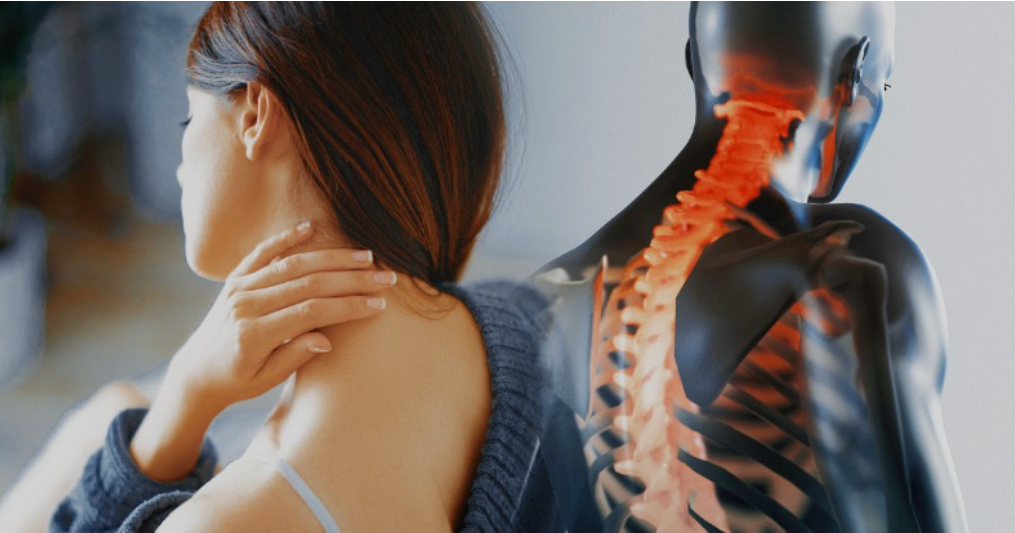Last month, we discussed neck pain caused from cervical disc herniations. This month we are going to continue that discussion.
1. “What can I do to at home to heal my herniated disc?” A simple acronym to help heal new injuries is “PRICE”. It stands for Protect, Rest, Ice Compress, and Elevate. This can be used for any number of musculoskeletal conditions.
- Protect your health by NOT placing yourself in an environment that is likely to harm you, such as playing sports or doing heavy yard work. That is, think about what you do BEFORE you do it and if sharp, radiating pain occurs, STOP and assess the importance of what you are doing. Use the concept, “…don’t pick at your cut.” This means if you want the injury to heal, don’t keep irritating it!
- Rest is similar. Limit your activities to those that can be done without increasing symptoms, especially radiating pain.
- Ice – The use of ice reduces swelling/inflammation, which reduces pain and promotes healing. Alternate it every 15-20 minutes (on/off/on/off/on) several times a day. You can also use contrast therapy (ice/heat/ice/heat/ice) at 10/5/10/5/10 minute intervals to “pump” out the swelling.
- Compress – The use of a collar worn backwards, if it’s more comfortable that way, can literally “take the load off” the neck and its disks. There are even inflatable collars which are pumped up with air to traction the neck. Other forms of traction will be discussed further.
- Elevate – The concept of raising the ankle to the height of the heart so swelling can drain out of the ankle is the classic example of “elevation.” In the neck, the traction concept may apply once again.
2. “I don’t want to have surgery if I can help it. What can you do as a chiropractor to help me?” This is one of our primary goals, and in fact, the goal of ALL healthcare providers, even surgeons! Chiropractic offers anti-inflammatory measures: ice, herbal anti-inflammatory agents (ginger, turmeric, bioflavonoid, curcumin, bromelain, Rosemary extract, Boswellia Extract, and more), digestive enzymes taken between meals, muscle relaxant nutrients (valerian root, vitamin D, a B complex, chamomile, magnesium, and others) as well as other non-pharmaceutical options. Treatments consist of manual manipulation, mobilization, traction (for home and office), modalities such as laser and low-level laser, electrical stimulation, magnetic field, ultrasound, and others. Most important is having a “coach” guide you through the stages of healing by first addressing the acute inflammatory stage (first 72 hrs), the proliferative or reparative phase (up to 6-8 weeks), followed by the remodeling phase (8 weeks to 1 or 2 years) and finally, the contraction phase (lifetime – includes the natural shortening of scar tissue). If manual traction reduces neck and arm pain, the use of home traction is very effective. Options include sitting over-the-door traction, laying down versions, and mobile traction collars (discussed previously). Exercises to stretch and strengthen the neck are also very important in reducing neck pain as well as preventing recurrences. If in spite of all the best efforts of this non-surgical care approach should ongoing neurological loss and relentless symptoms continue, your doctor of chiropractic will coordinate care with physiatrists for possible injection therapy and pharmaceuticals, with neurologists for further testing (such as EMG/NCV – a nerve test), and/or neuro- or orthopedic surgeon non-surgical approaches fail.



